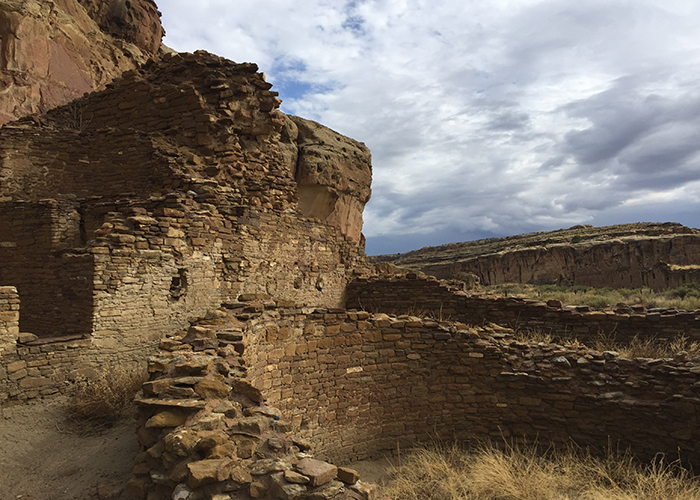 Previous Day |
Chaco Culture NHP → Aztec 70.9 mi (114.1 km) |
 Next Day |
Rain, rain, time to play, everyone!
It rained so much last night that our spot at the Gallo Campground turned into a marsh! For us, that didn’t matter so much, but I felt bad for our neighbors in tents that were low to the ground. Luckily for us, the road into Chaco Canyon opened bright and early at 7:00, so we headed off to beat the crowds and the weather!
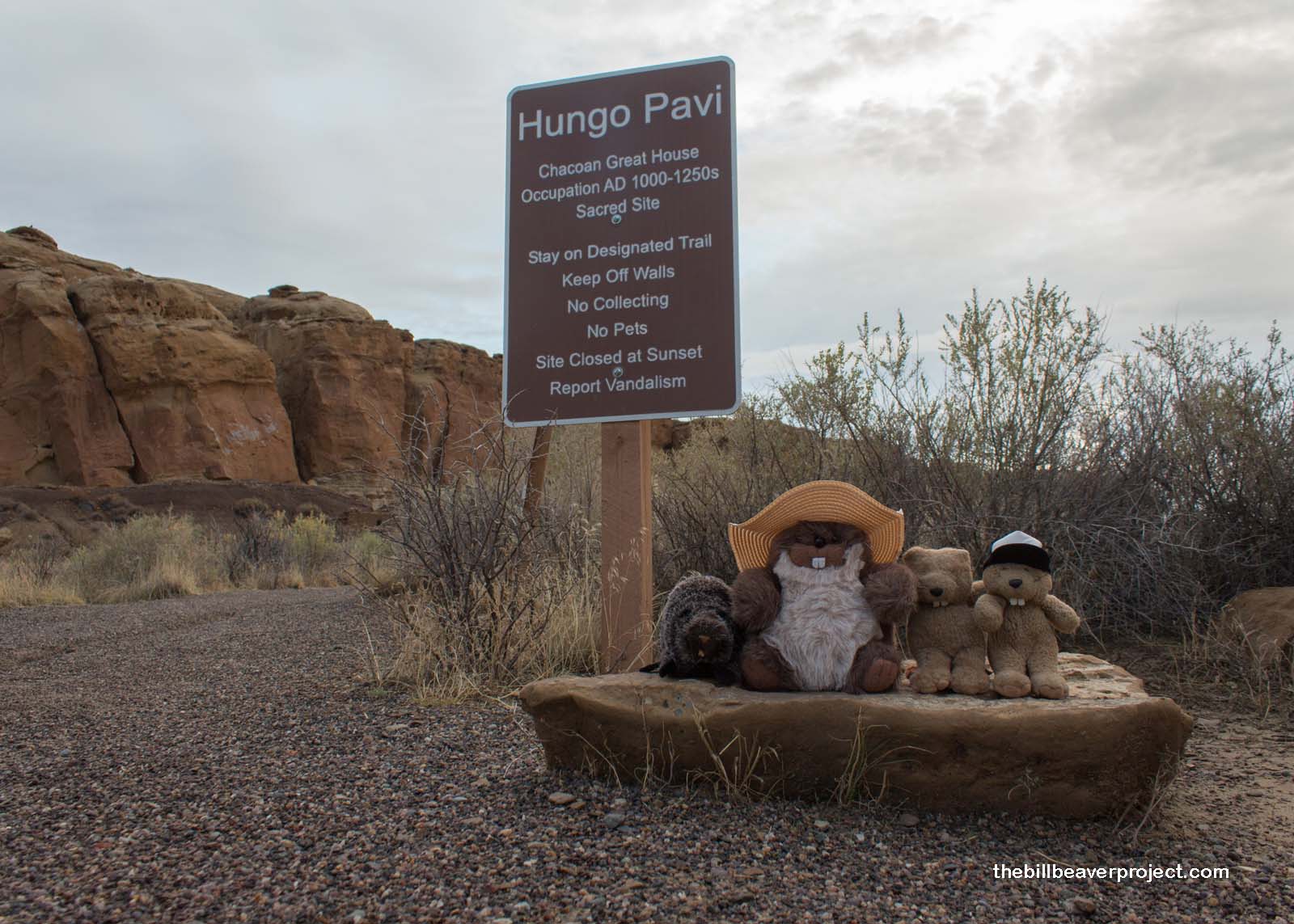 |
Chaco Canyon is full of amazing ruins from around 850 to 1250 AD, but there’s evidence that humans have lived here for over 10,000 years! There are over four thousand known sites in Chaco Culture National Historical Park, featuring North America’s largest, best preserved, and most complex prehistoric great houses! To make sure we included Woodchuck, who got left out on our hike through Canyonlands, we decided to select a few of these great house that were closer to the road.
We started at Hungo Pavi, mysteriously named by a Mexican military guide in 1849. Apart from a few walls rising from the desert floor, most of this great house remains underground, where the winds and dust of ages left it! This house, like most of the great houses of Chaco Canyon, featured a great kiva that drew people from far and wide for gatherings and ceremonies!
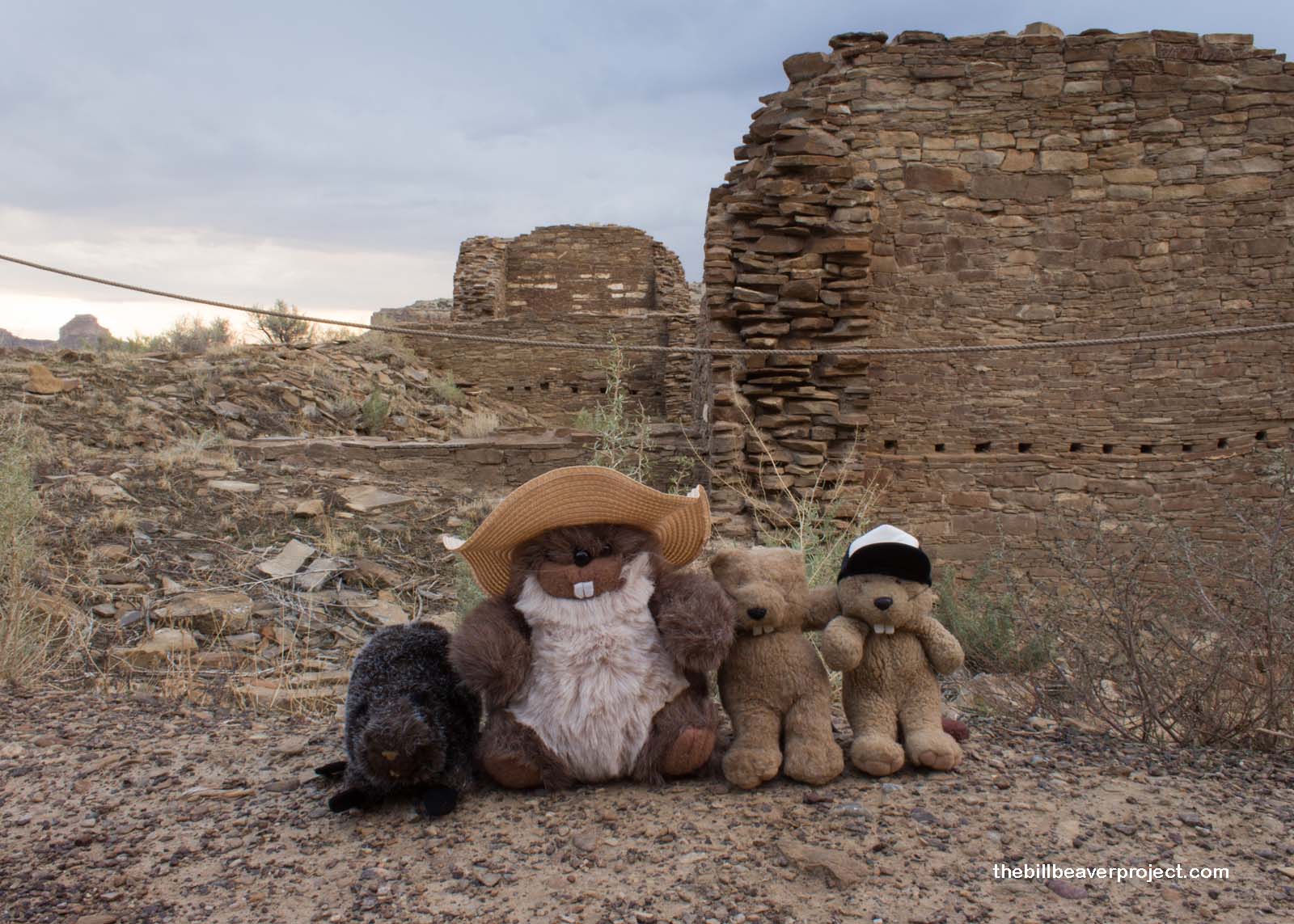 |
A short way down the road, we encountered Pueblo Bonito (“pretty town”), the largest and best studied of all the Chacoan great houses!
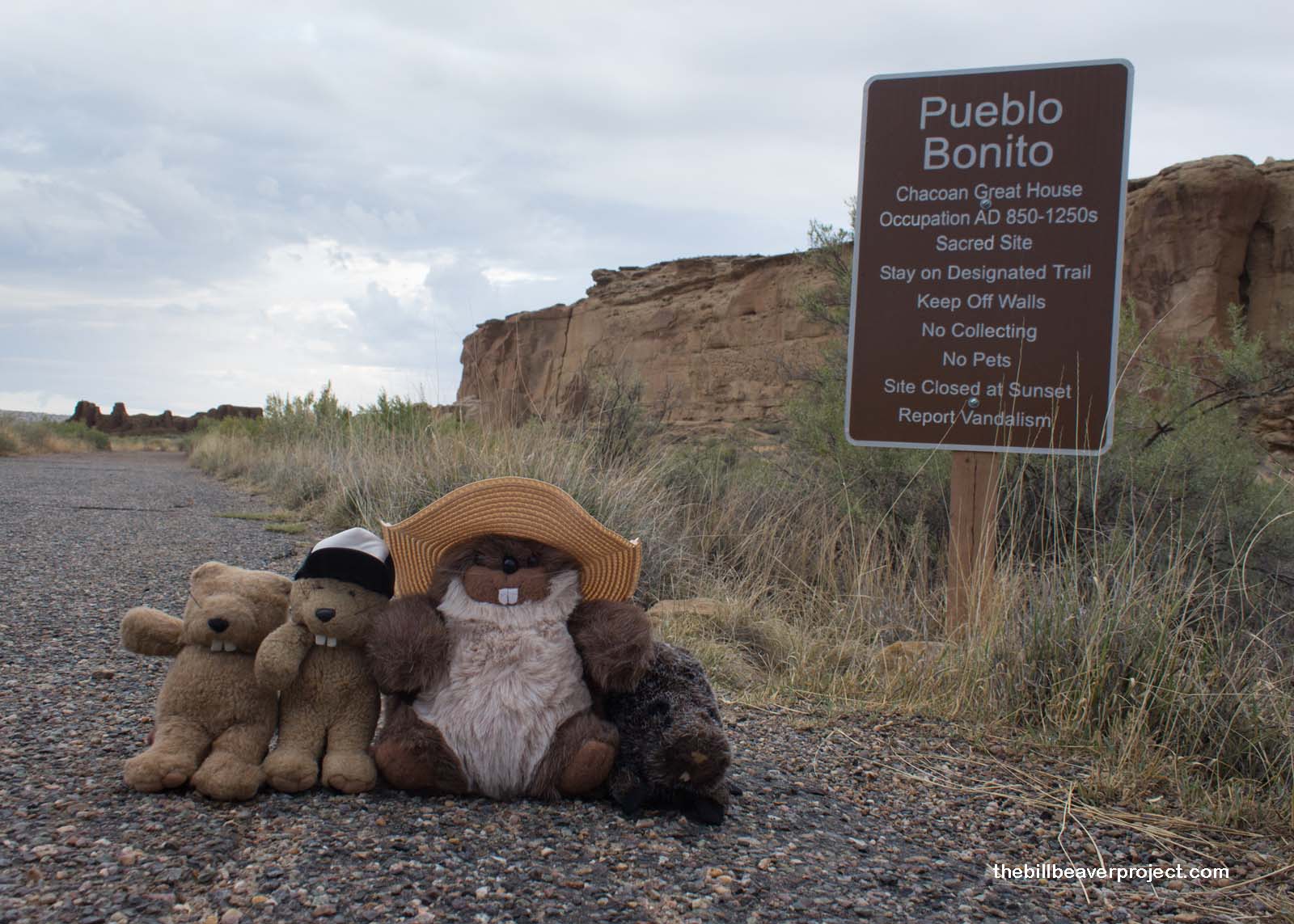 |
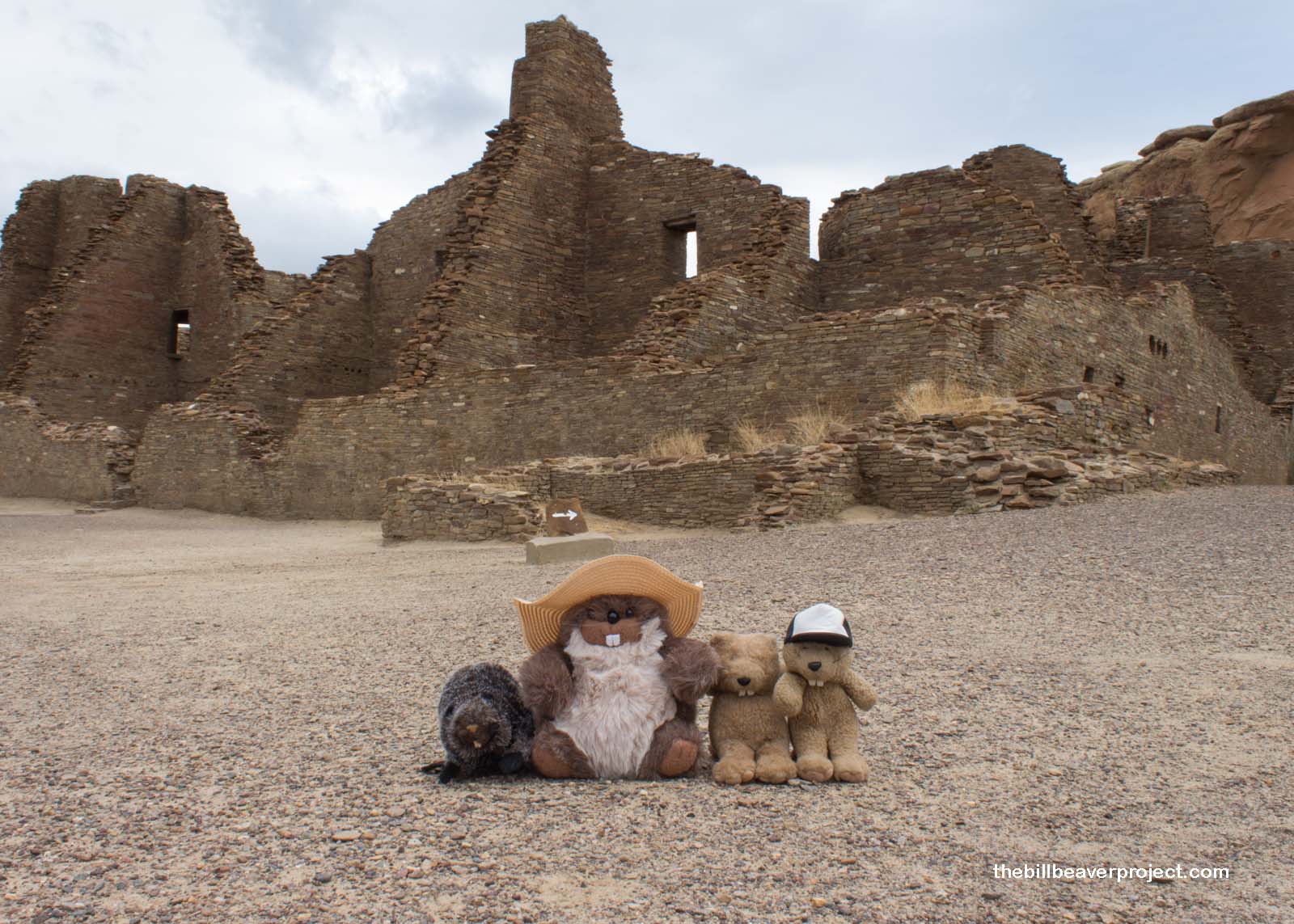 |
At the start of its excavation in 1896, this entire pueblo was covered by tons of rock, dirt and sagebrush. The structure was mostly intact, but many of the walls had to be fortified or rebuilt after they were exposed to the elements again. What excavators uncovered was breathtaking: a three-acre town, made up of 600 rooms, some towering over five stories!
We were astonished by the magnificence of the ruin, which was starting to draw other travelers in the early morning, like a yellow duck detouring on its way south for the winter!
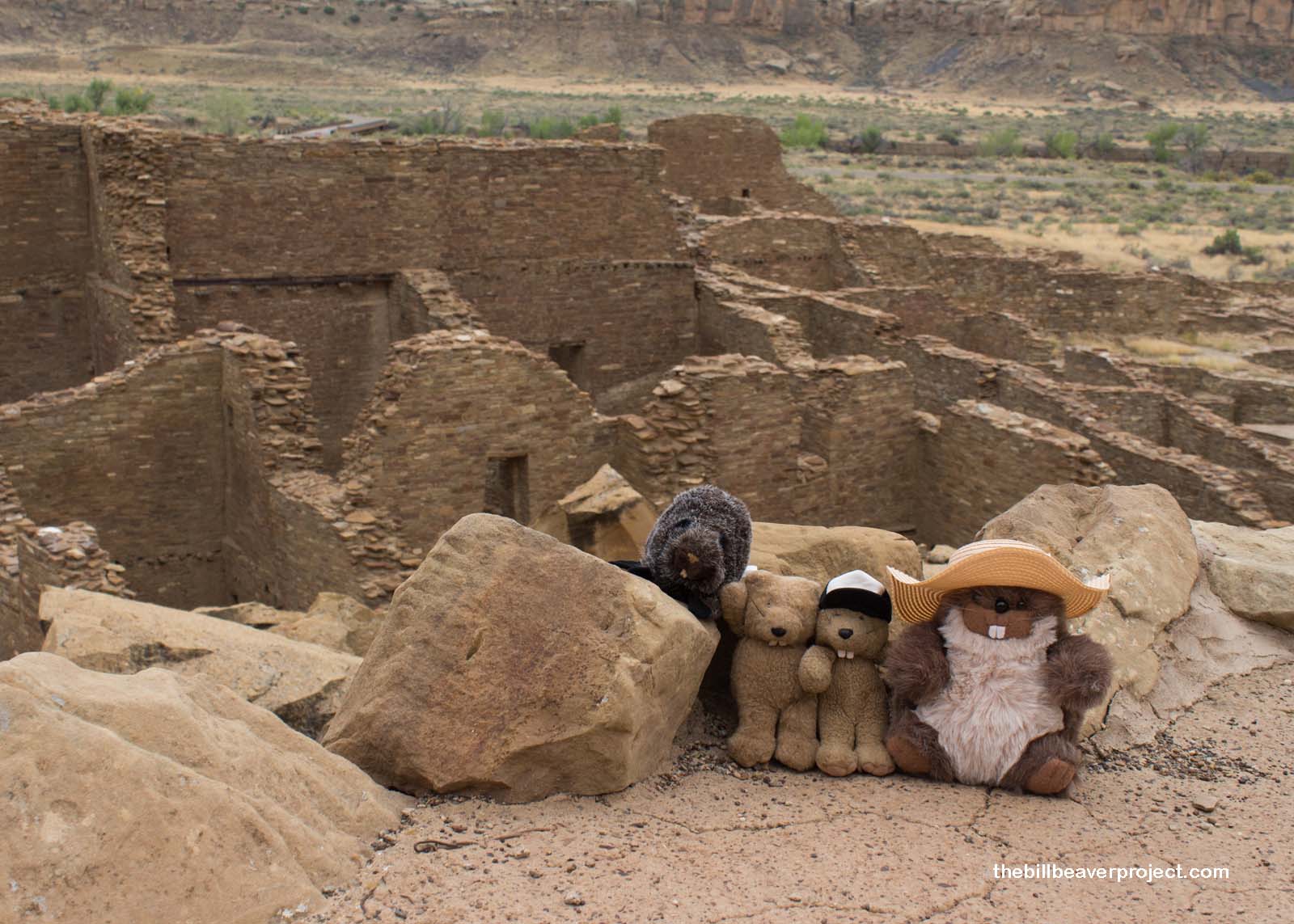 |
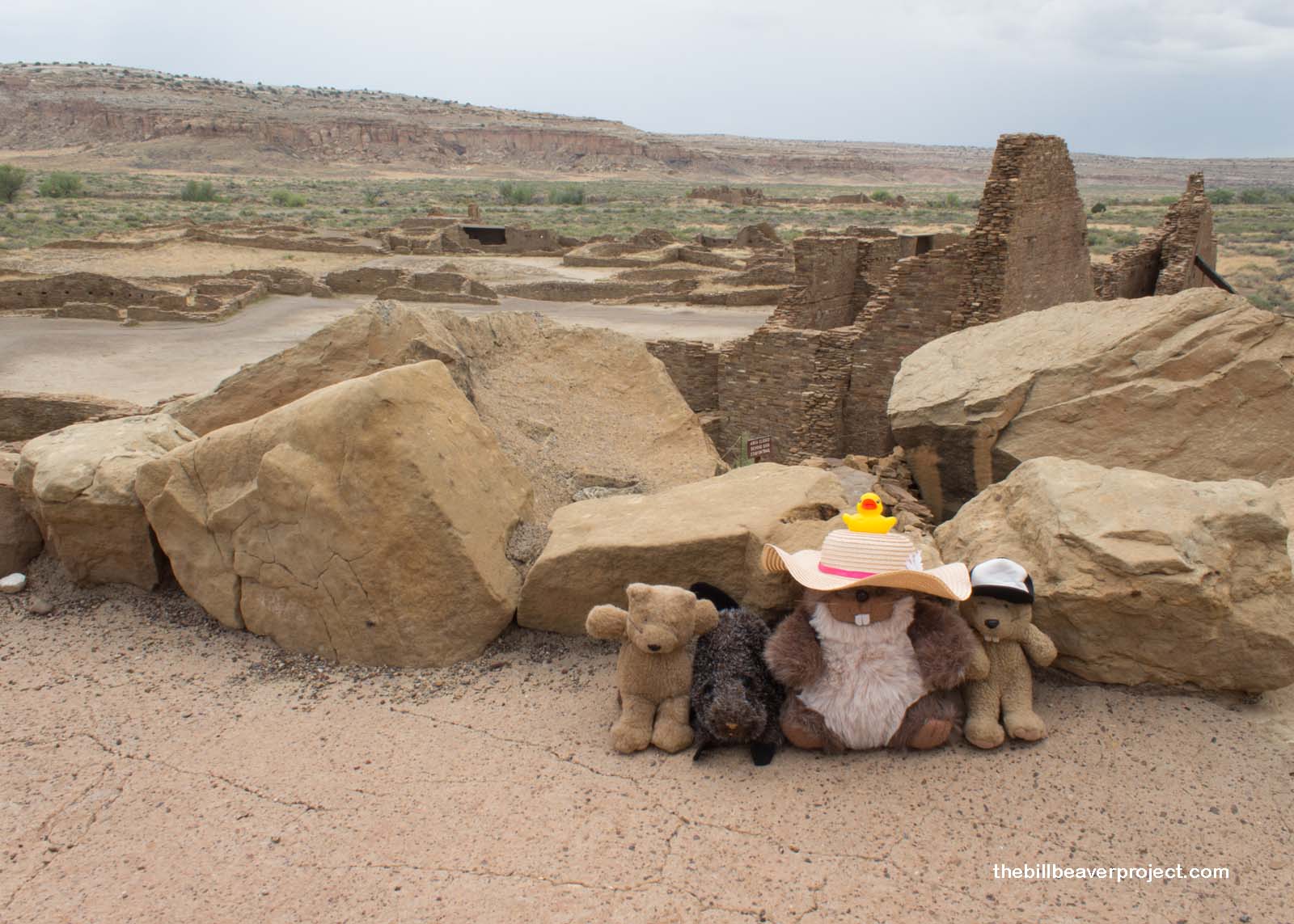 |
This whole structure was built over many generations and was once bustling with merchants, artisans, and medicine men. It was hard to imagine as the storm clouds gathered overhead, covering us in the dark and quiet. I had to wonder, what will be left of my home in 800 years?
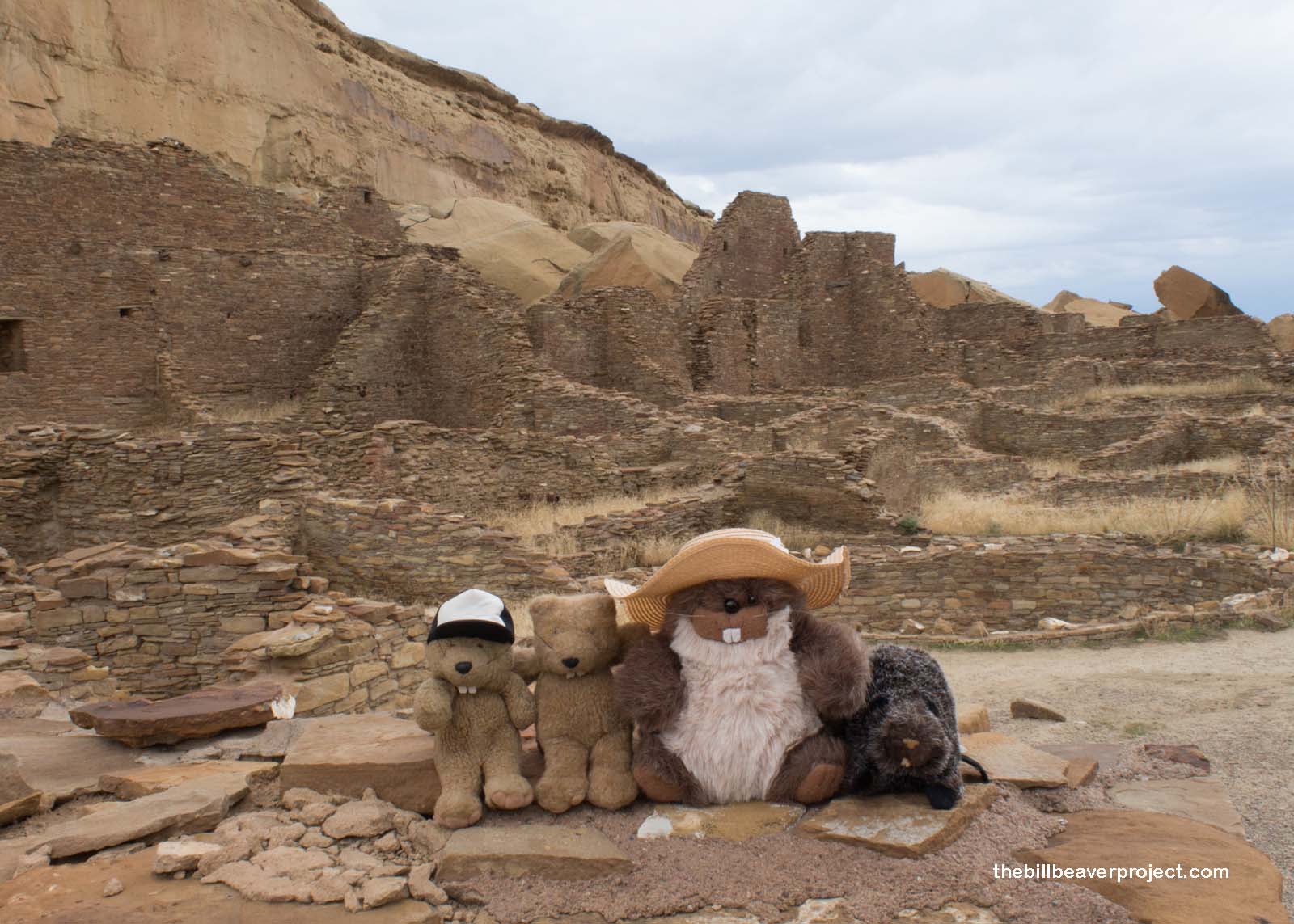 |
It was just the sort of thought that made the sky open up over us, and we scampered to take shelter inside the ruins! Chaco Culture National Historical Park has taken the great risk of letting visitors into these ruins without protective fences. Along the nearby cliffs, the petroglyphs along the trail have been mostly scrubbed and chiseled into oblivion, so I was at least happy to see these rooms untarnished by scribbled names.
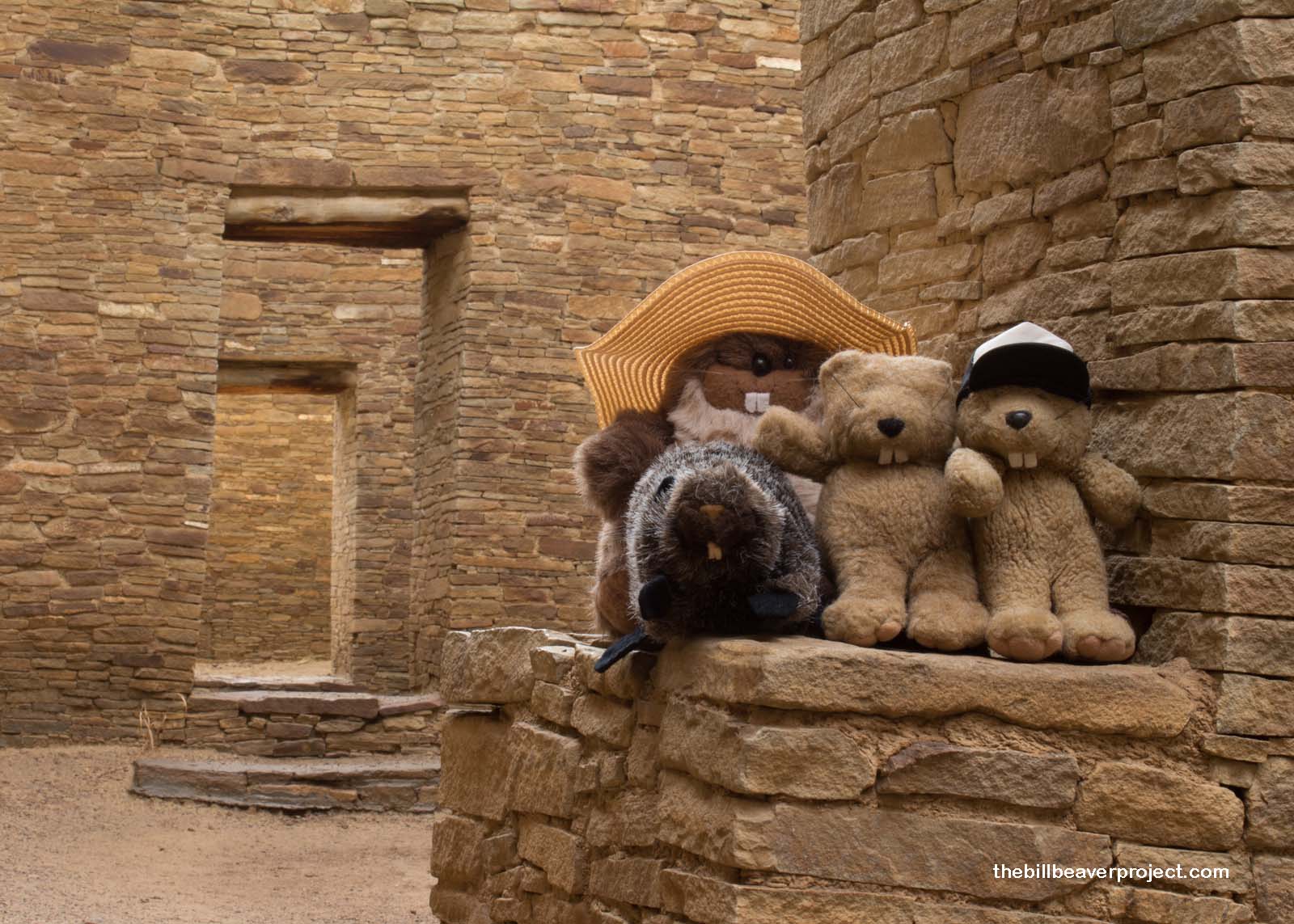 |
The rain poured for a good twenty minutes, but then it settled, and we were back on the trail to Pueblo Bonito’s eastern neighbor, Chetro Ketl! Though it’s not clear what Chetro Ketl originally meant, when Edward Kern made his first ground plan of this great house, it was called “Pueblo Chetho Kette,” which means, fittingly, the Rain Pueblo!
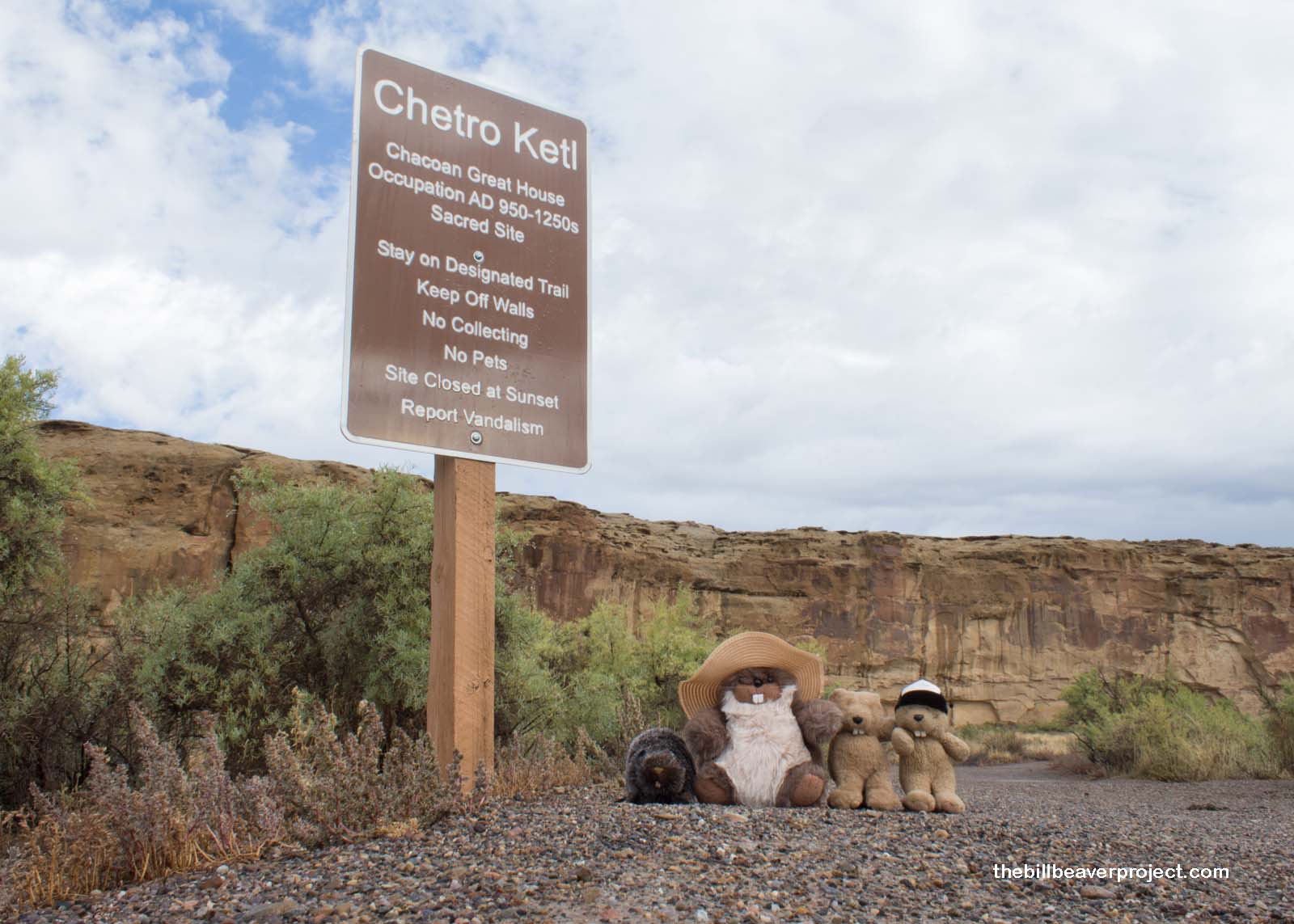 |
As we approached the Rain Pueblo, the skies actually started to clear! Little glimmers of sunlight shone down upon the walls and kivas of this beautifully restored 5.7-acre, 400-room complex. Construction on Chetro Ketl started about a hundred years after Pueblo Bonito and continued all the way until the mysterious disappearance of the ancestral Puebloan people around 1200 AD. The prevailing theory is that they moved away during a long drought to find more water, though some folks swear that they were abducted by aliens!
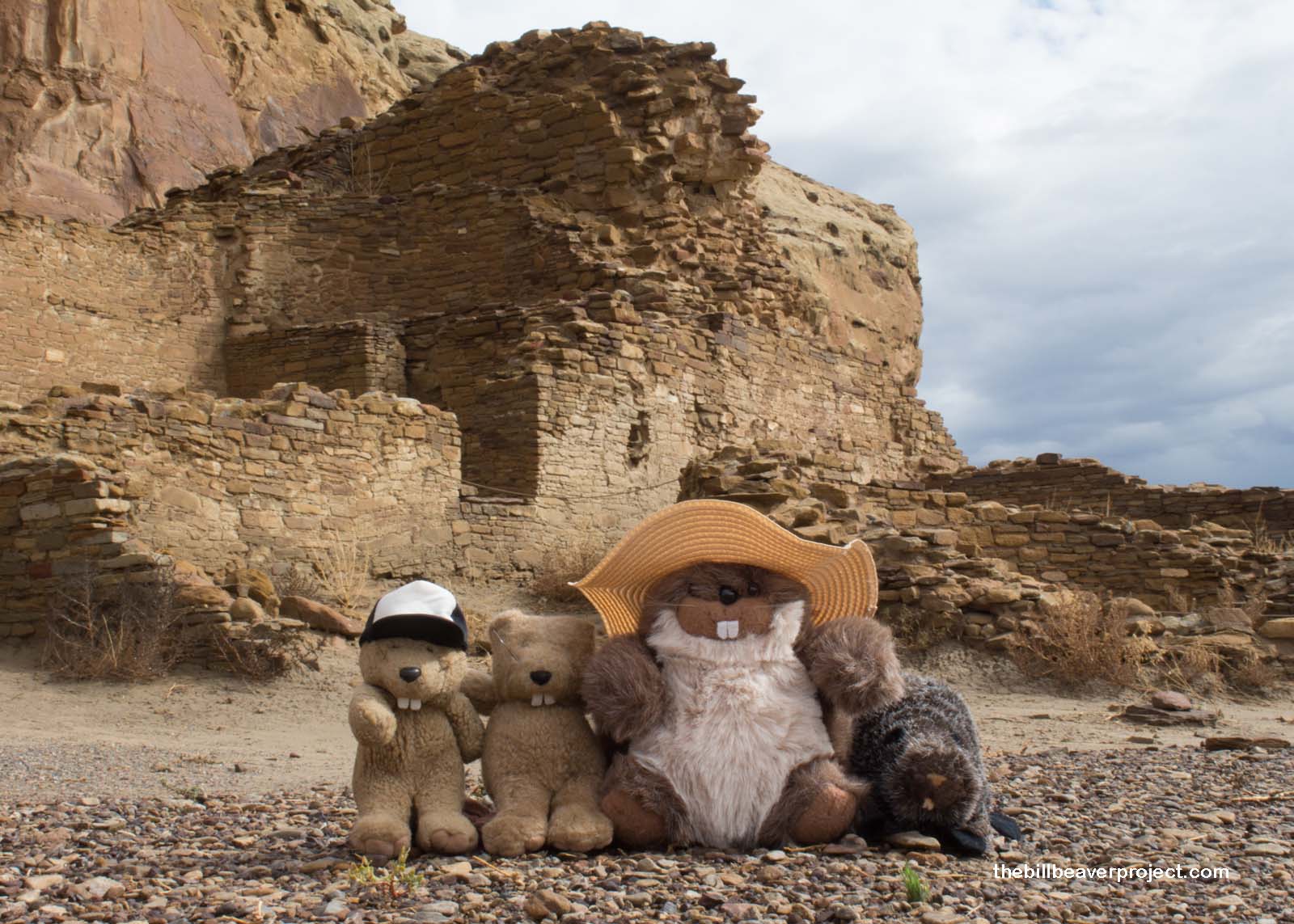 |
We passed a huge wall that reminded me of the backside of a movie set, beautifully restored down to minute details! The juniper supports, with round wooden pegs still holding them together, have been preserved inside the bricks and were visible from the trail! The rings of these tree trunks, compared to the rings in still living trees, have given scientists a more precise date of when these buildings were built!
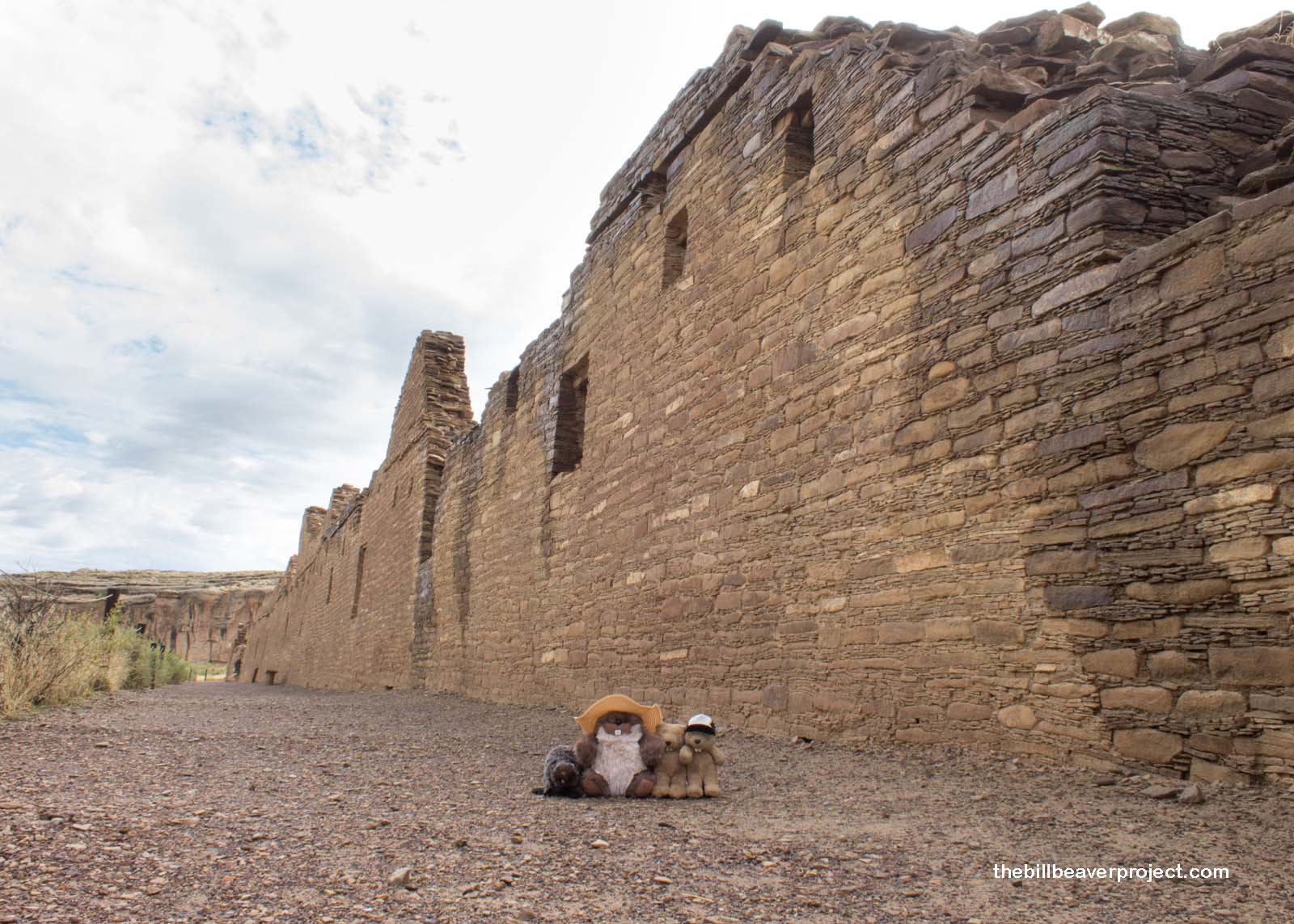 |
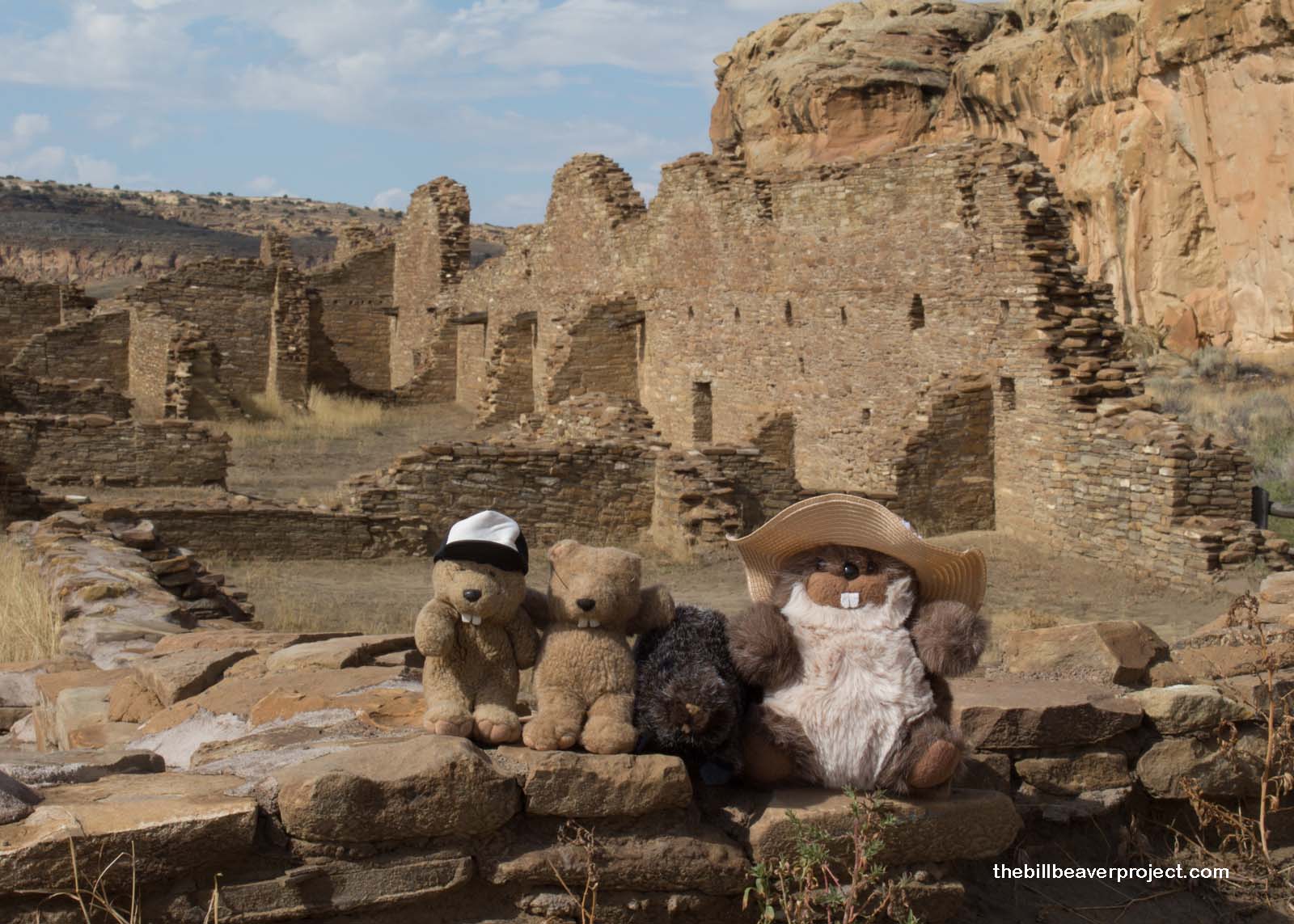 |
There were lots of kivas here, which made me think of side rooms at a conference. I had to wonder how many topics were discussed in these circular meeting rooms: farming, weather, life, death, spirits, gossip? That’s one of the things rarely pondered in discussions about the ancestral Puebloans. What did they gossip about?
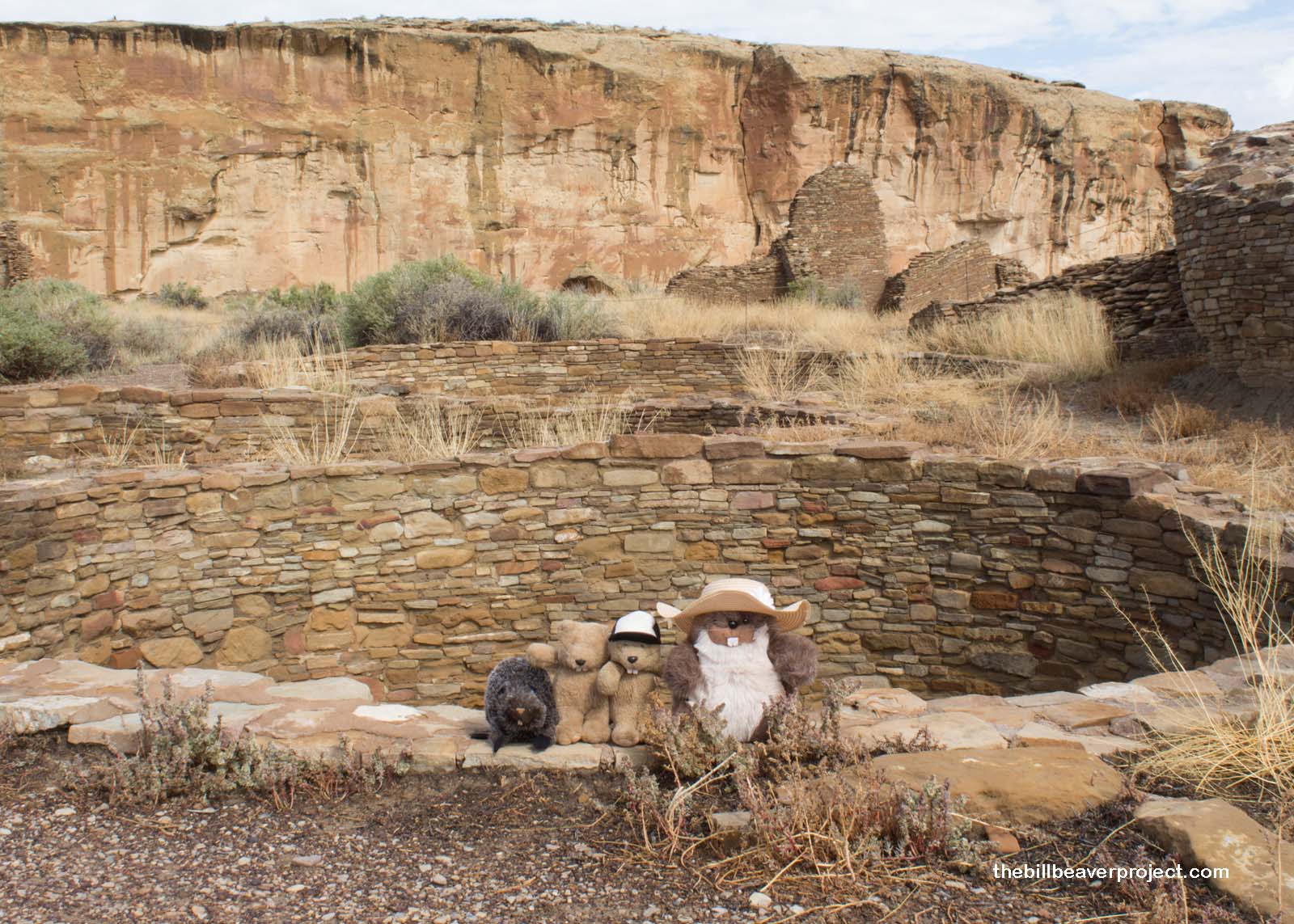 |
We continued our loop to the Pueblo del Arroyo, the fourth largest great house and unique because it was built in the middle of the canyon and not along its outer cliffs! It was also built to face the east, and not the south, which is mysterious! Perhaps it was meant to capture the sunrise?
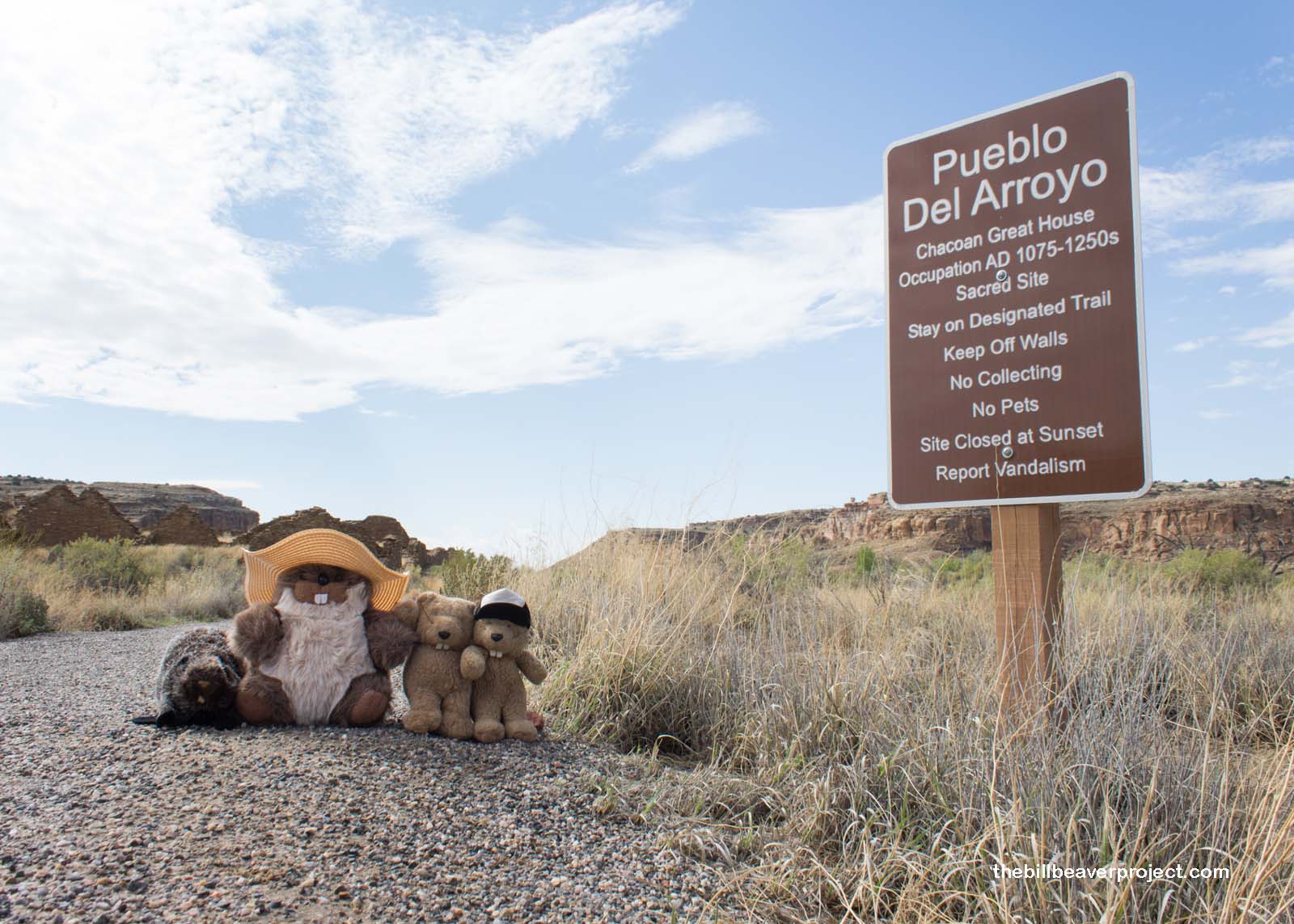 |
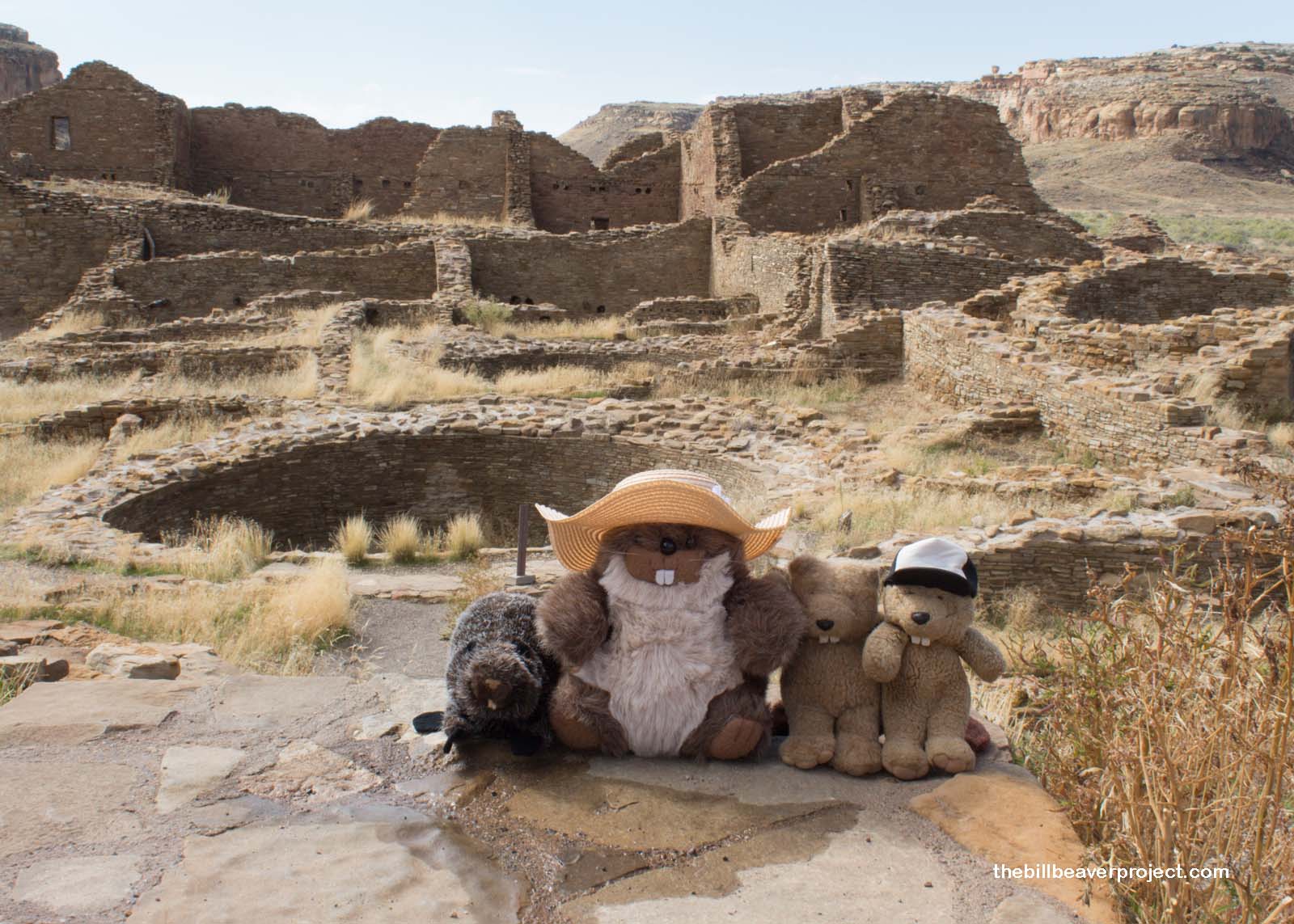 |
Our last stop in the canyon before heading north to Farmington was the Casa Rinconada! Unlike the great houses we’d just visited, the Casa Rinconada (“corner house”) was a single huge kiva, built shortly after Pueblo del Arroyo. Sixty-three feet across, with a 39-foot underground entrance, this kiva was built to accommodate a lot of folks at once and give ritual performers the ability to enter unseen and appear suddenly!
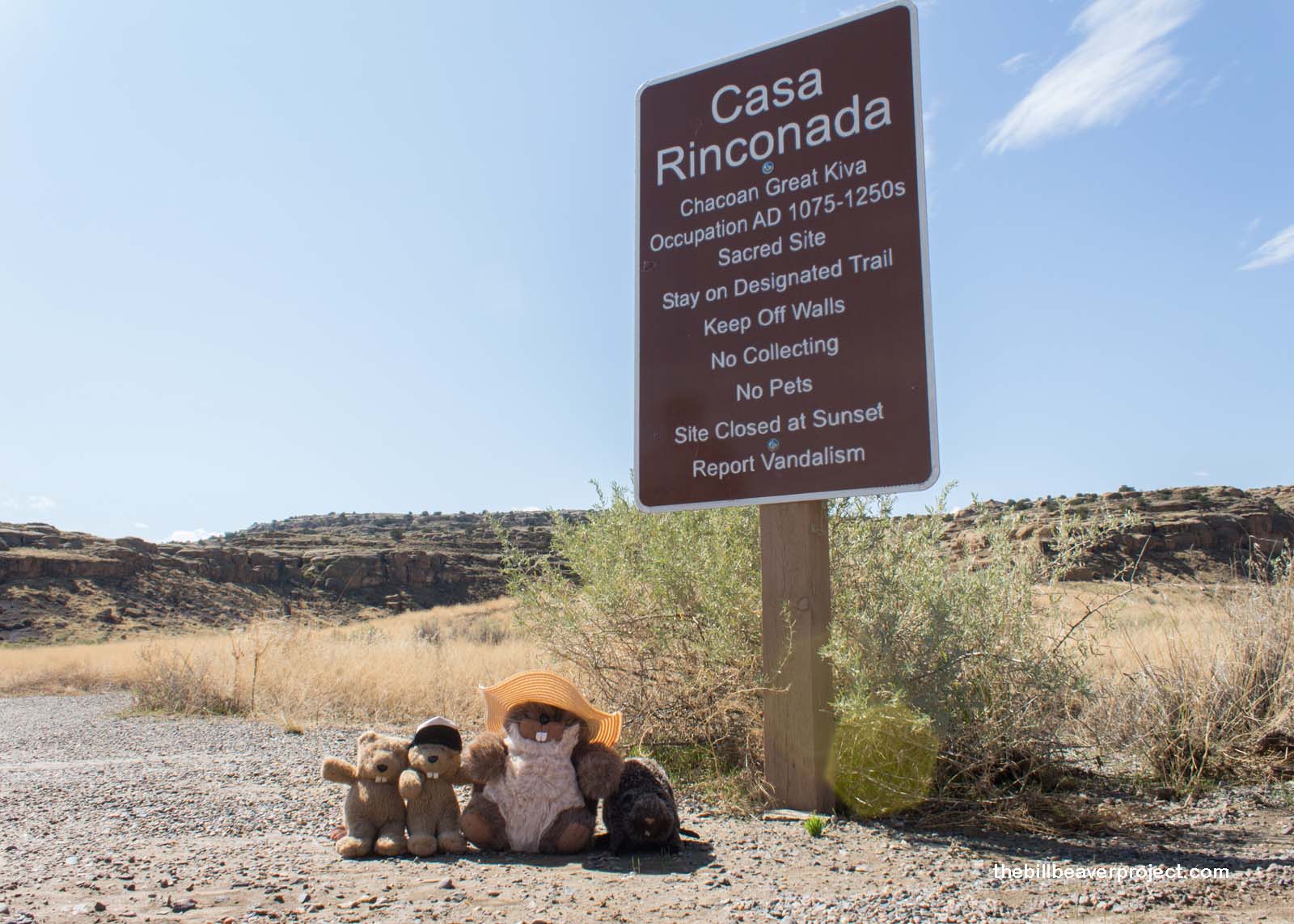 |
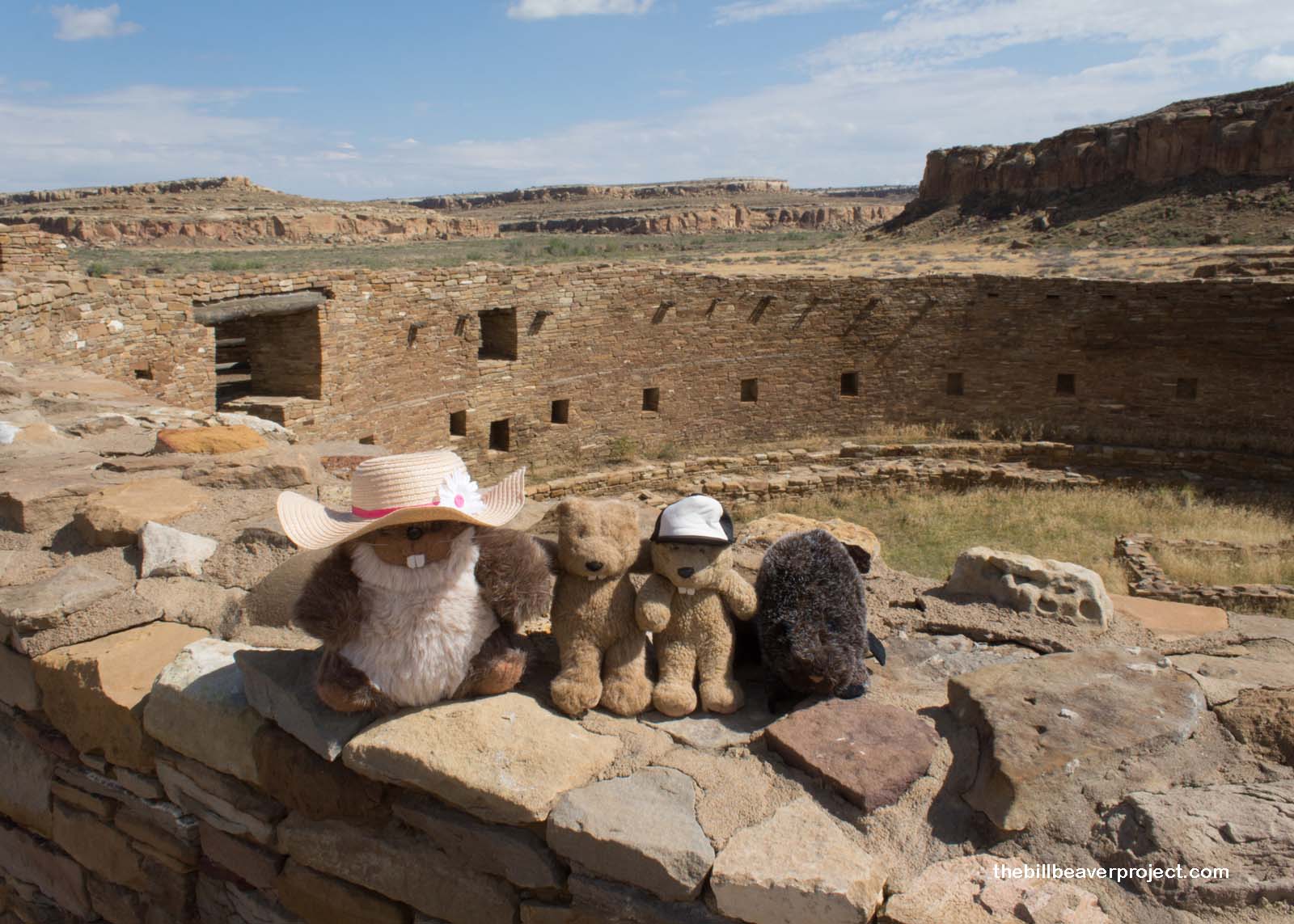 |
Surrounding the Casa Rinconada were a bunch of mounds, unremarkable to the average eye. One such mound, partially excavated, revealed a portion of a small village, probably for a single family or a staff member of the Casa Rinconada. Beneath all these mounds, other villages had yet to be excavated! I had to wonder what hidden treasures had yet to be revealed and which ones would remain buried forever!
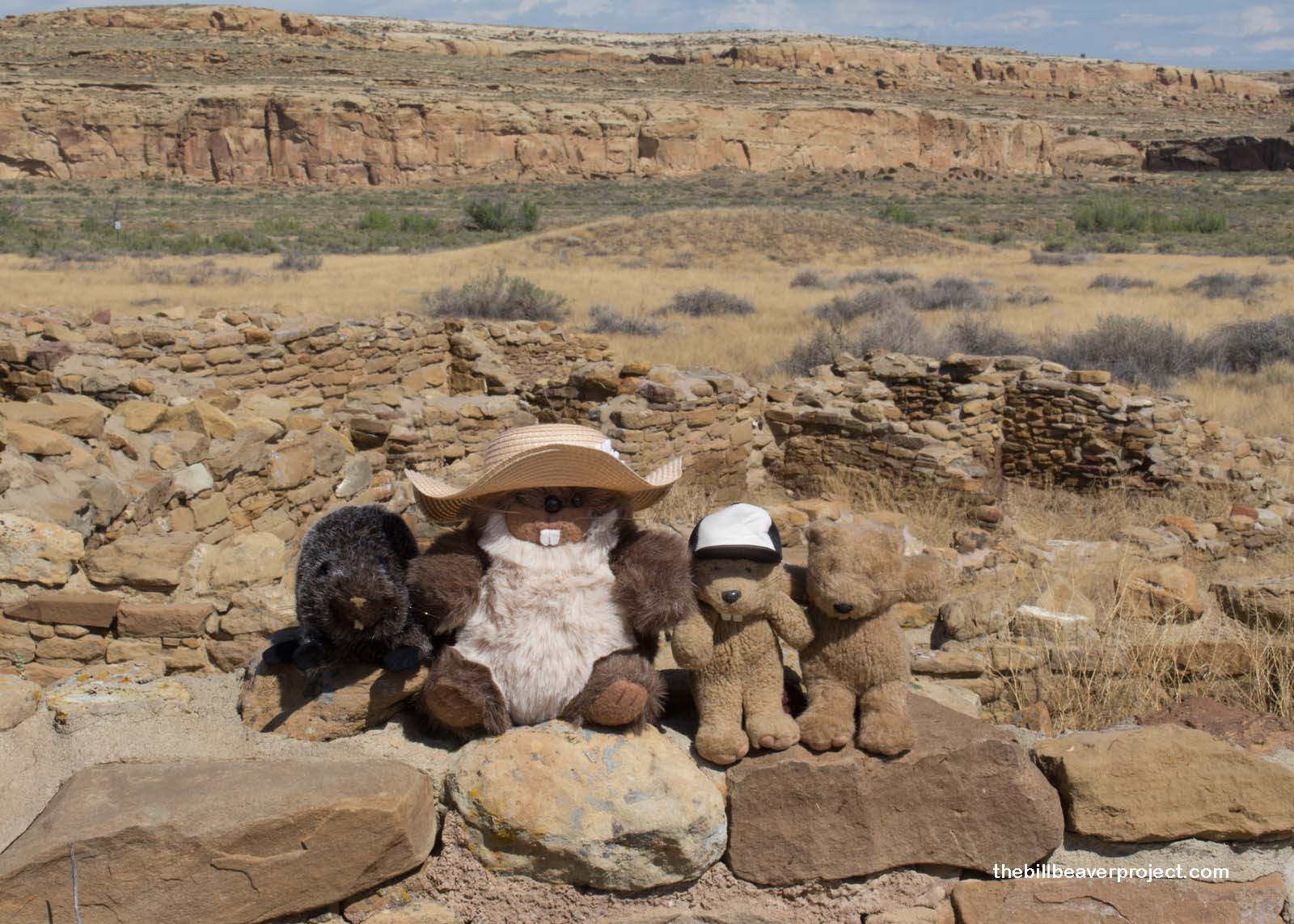 |
With the sky clearing and our path open ahead, we got ourselves back together and headed north toward Aztec Ruins National Monument, hoping to arrive before they closed at 4:00. The northern road was just as rugged as the southern one, but we were on track to make it just in time. And then, we ran into this:
|
|
A flash flood! Though the rain had stopped over Chaco Canyon, heavy rains elsewhere were now racing downstream, washing out the road in muddy water! We scratched our heads as the line of vehicles piled up on both sides. Woodchuck offered his expert opinion as a construction worker in the Utah desert: make lunch and wait it out.
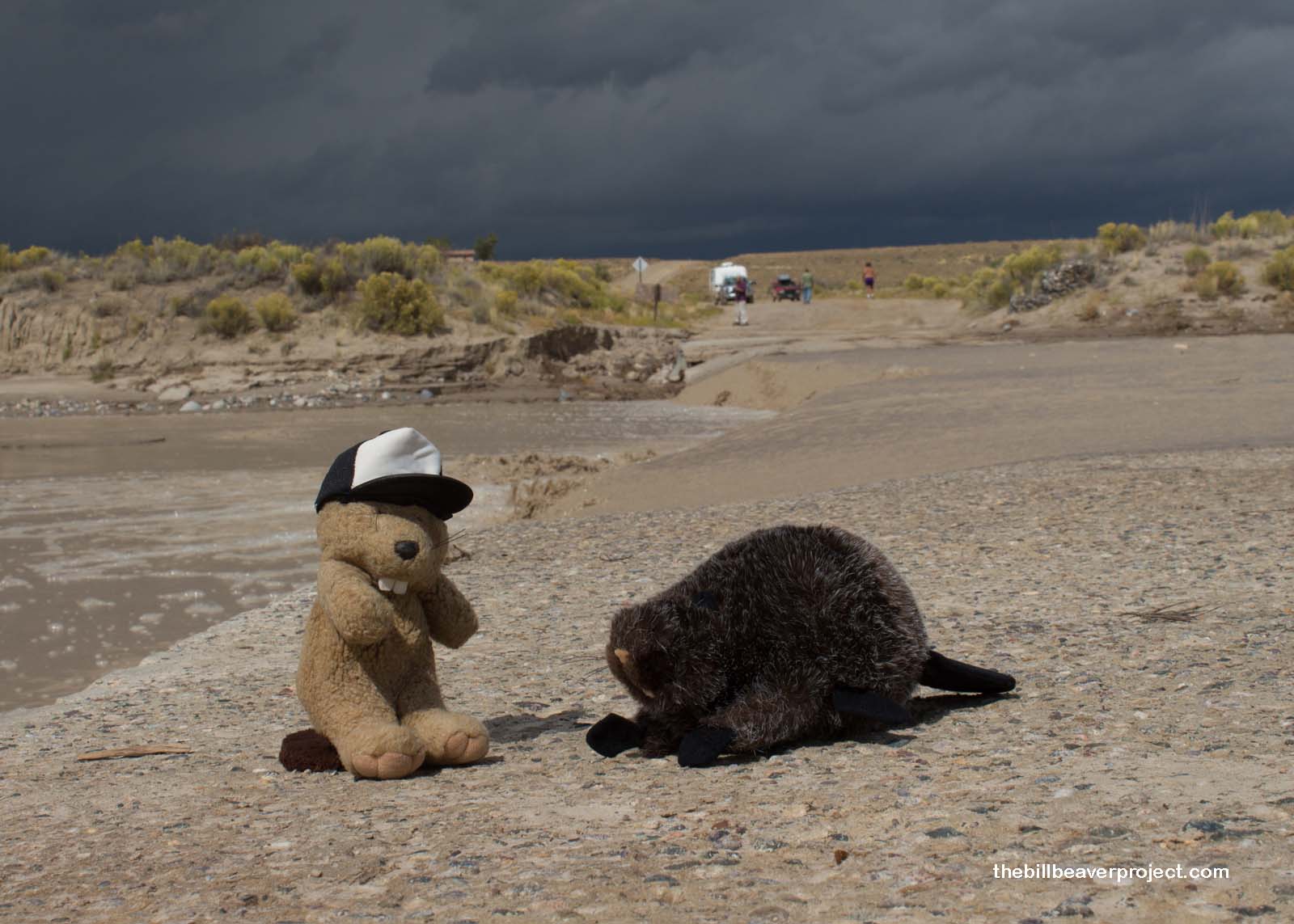 |
So we sat down to make soup. Twenty minutes passed, then half an hour, then an hour. The water level was slowly getting lower, but the clouds were getting darker overhead. We were going to have to take our chances soon if we were ever going to make it to Aztec. One car made it across, and we decided to follow, but as we approached the water, we made a startling discovery! A small, white creature was lying face-down in the mud on the river bank! It was still breathing, very faintly, so we hurried to get it inside!
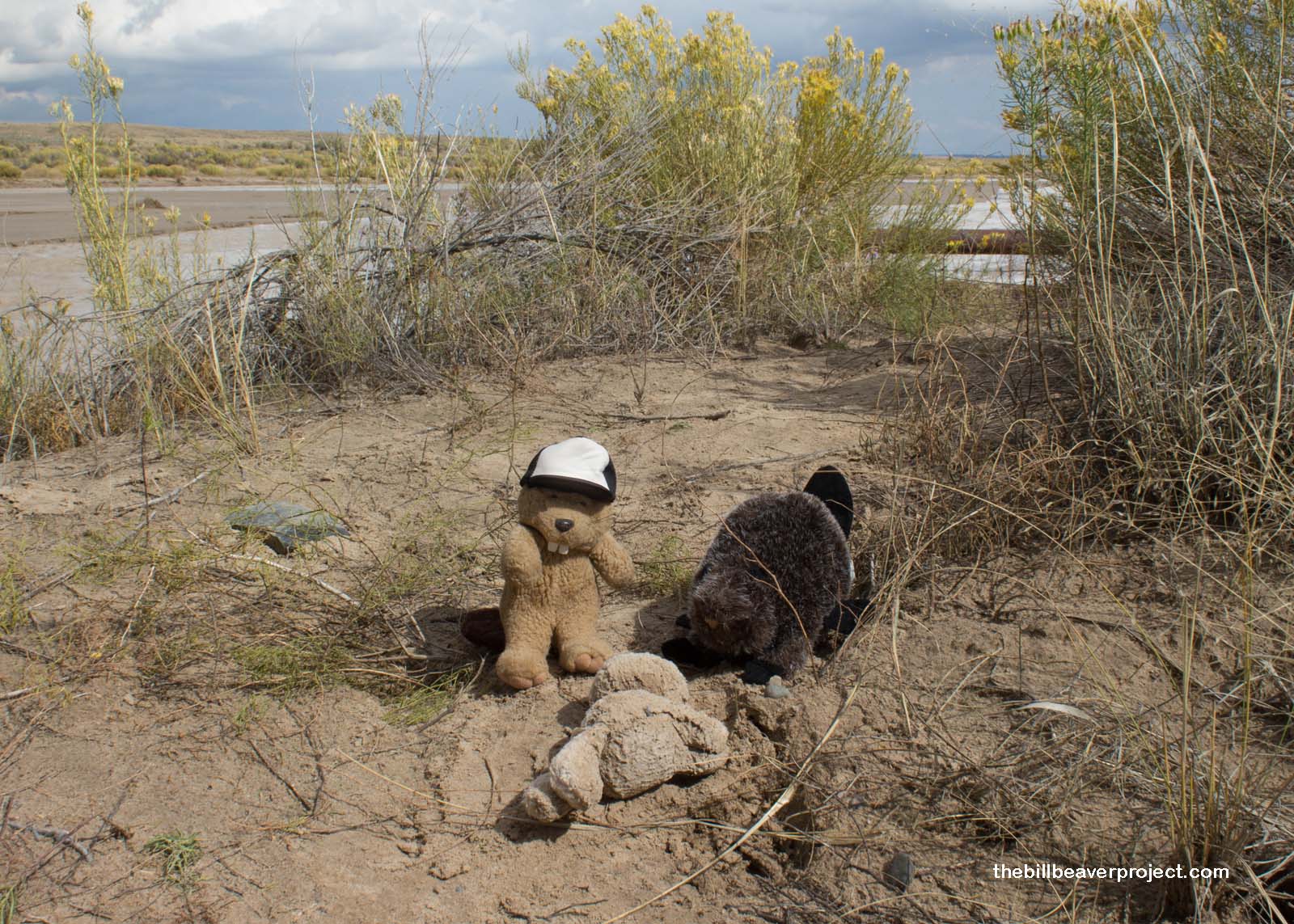 |
Mom took one look and identified it: It was a baby yeti! What the heck a baby yeti was doing in the desert of New Mexico, we had no idea, but the bright blue eyes and tuft of blue hair on its head gave it away. It was unconscious, but Mom knew just what to do. She had met a few yetis way back in the day when she and Dad lived in Siberia. She cleaned the mud out of its fur and cleared out its airways. It was overheated, and we would need to get it somewhere cool soon!
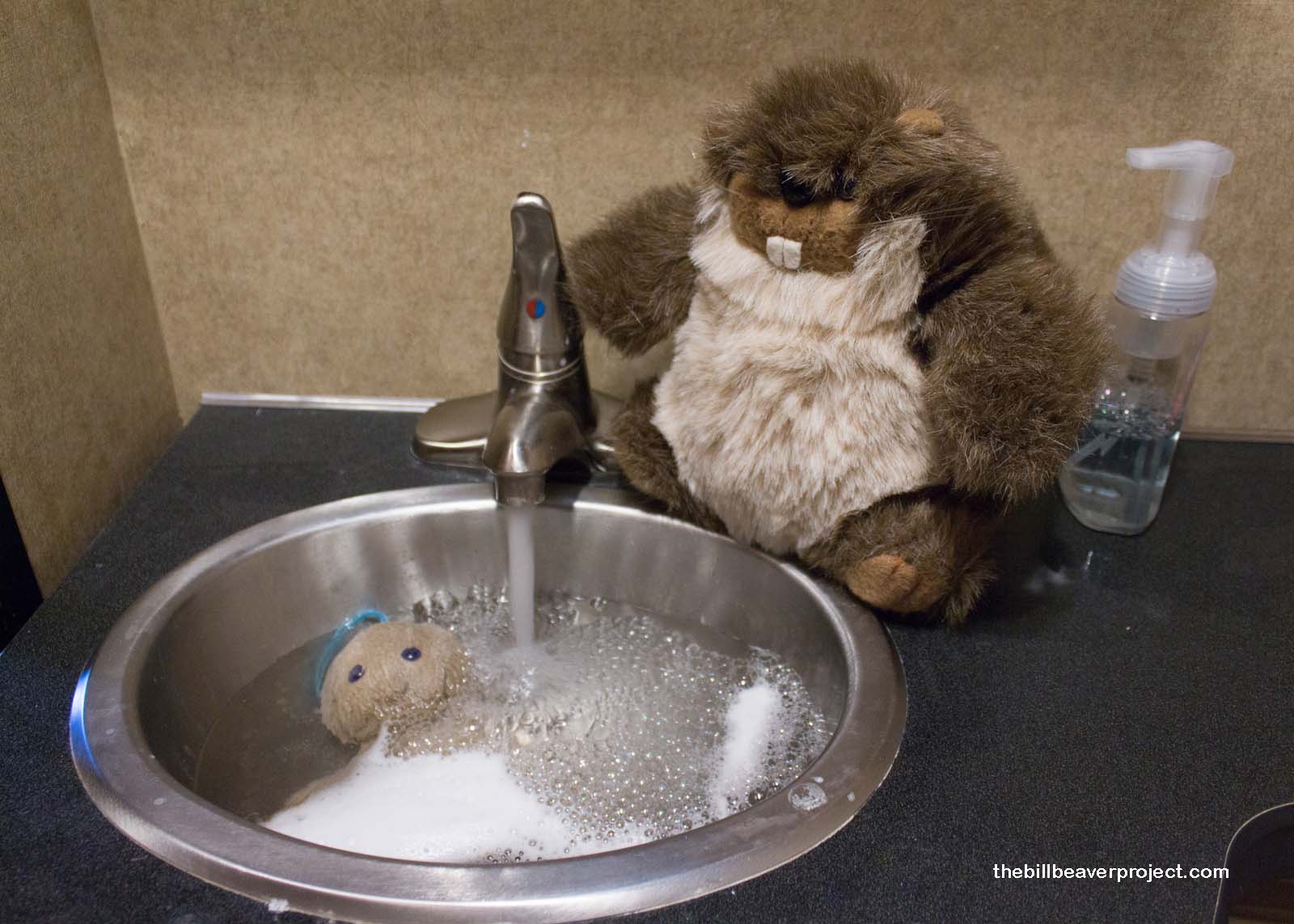 |
We steeled our collective resolve and pushed through the muddy flood with whoops of victory, conquered the last of the rugged road, and found ourselves stuck in horrible traffic, caused by an even more horrible accident. We were really tense waiting for the road to clear, but the baby yeti seemed stable under Mom’s care.
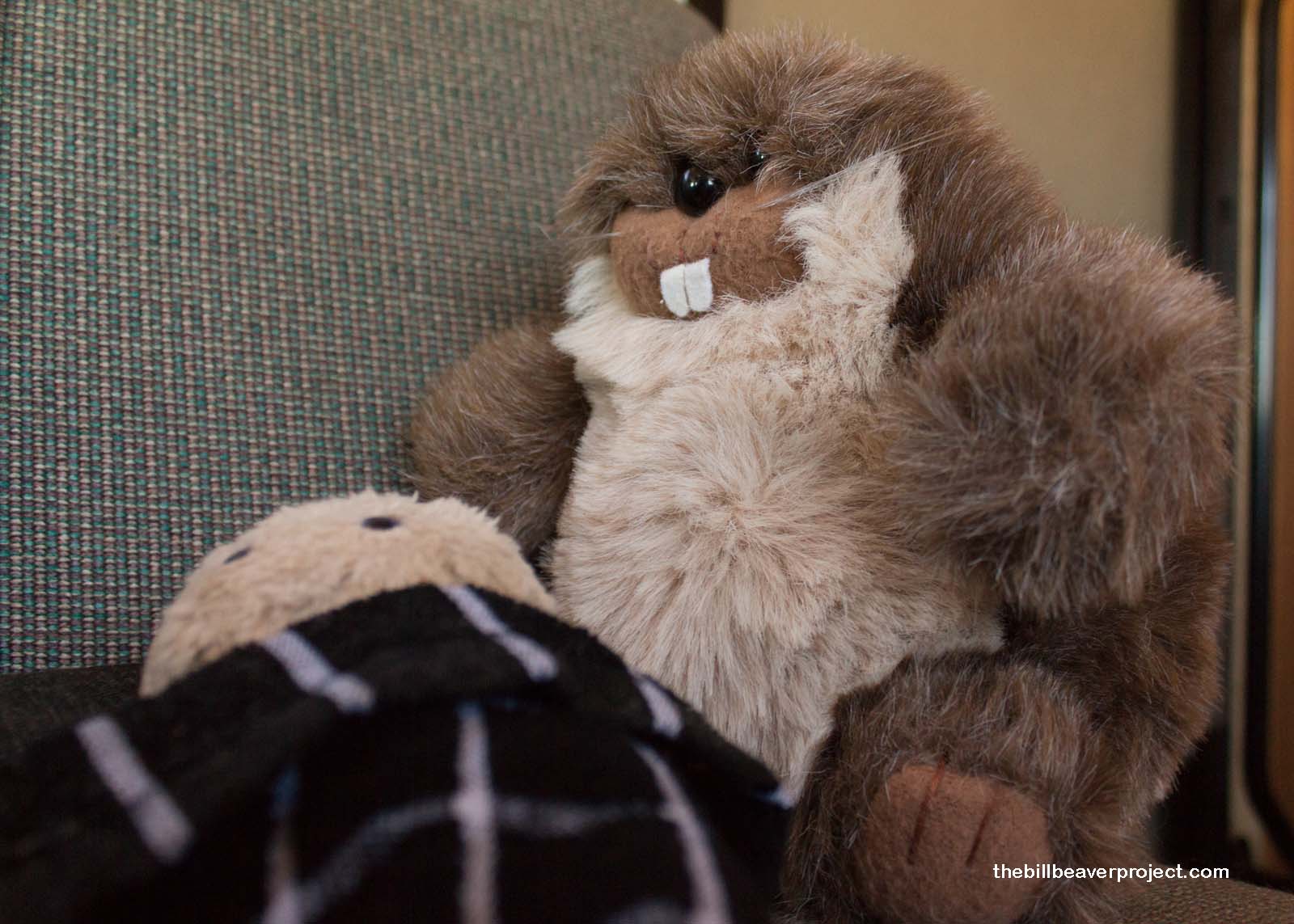 |
It took two hours to get to the Ruins Road Campground in Aztec, but we found some ice for the baby yeti. As soon as it touched the ice, a stony crust formed over it, necessary, Mom said, for it to regenerate. It would take a few days for the crust to break up again, but she wanted to watch it for the night, just to be sure.
Outside, the leaves had finally turned the right shade of yellow, and our campsite was right next to the Animas River. The conditions were just right for Lastleaf! We were finally going to celebrate Lastleaf together as a family after years apart, but Mom wanted to keep an eye on our new guest. She told Woodchuck, Flatty, and me to go celebrate the beaver holiday together. To her, the ritual was less important than the rest of the time she was spending with us.
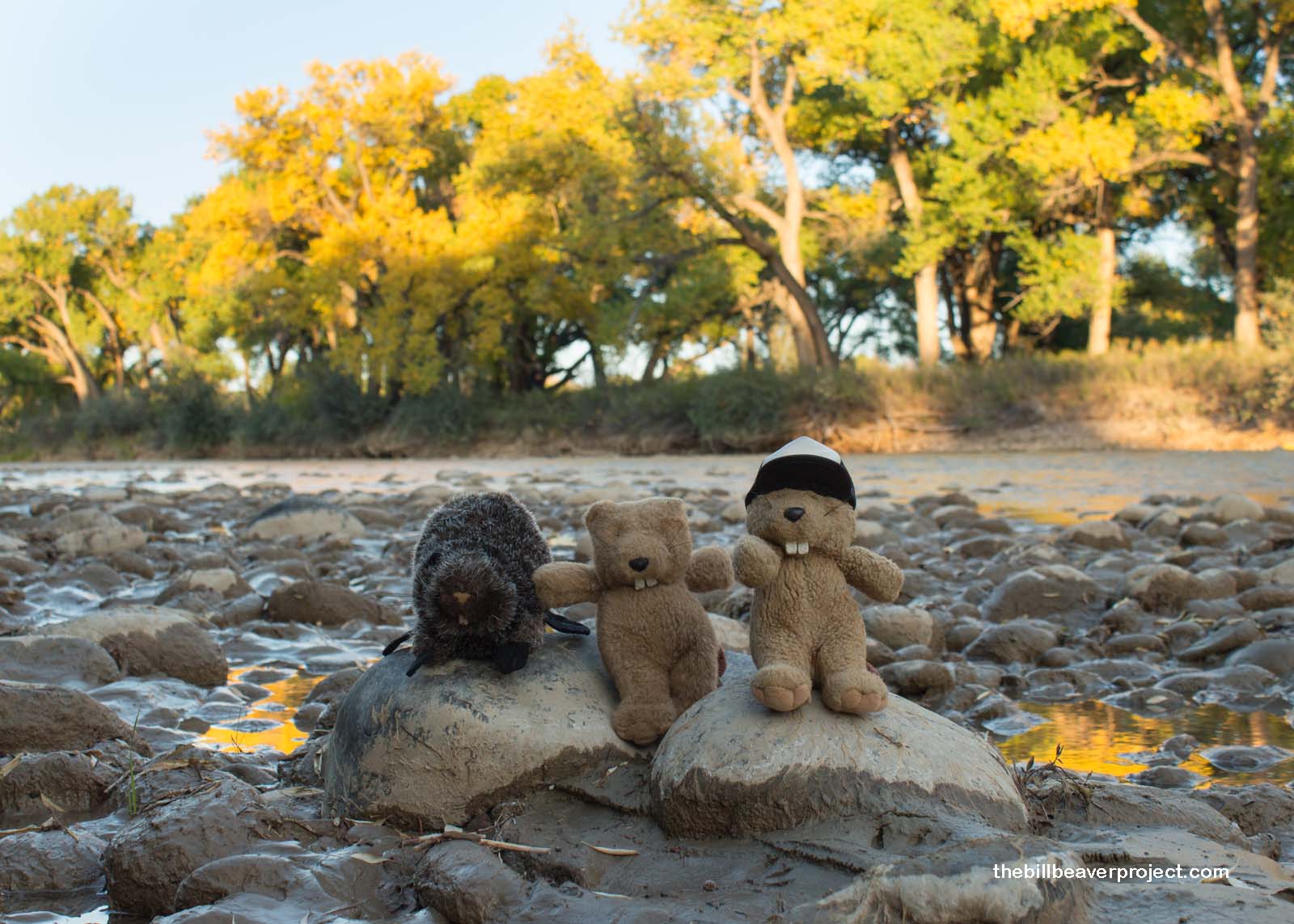 |
So Flatty, Woodchuck, and I went down to the river. The mood was a little somber, which kept us from frolicking as we normally would, but we enjoyed watching the sun set over the brilliant trees along the riverbank. We enjoyed some tasty Chinese food for dinner and settled in to a suddenly chilly night, a reminder that the seasons still change outside of Los Angeles. Hopefully, it will be the right temperature for a baby yeti.
Happy Lastleaf!

 Previous Day |
Total Ground Covered: 958.8 mi (1,543.0 km) |
 Next Day |
